在此处更改您的语言和 LGT 位置。
私人客户的数字平台
登入 LGT 智能银行
金融中介机构的数字平台
登入 LGT 智能银行 Pro
常见问题解答 (FAQ)
LGT 智能银行帮助
常见问题解答 (FAQ)
LGT 智能银行专业版帮助
The majority of the world's population lives in cities. As a result, urban centres must find innovative ways to respond to rising temperatures and water insecurity.
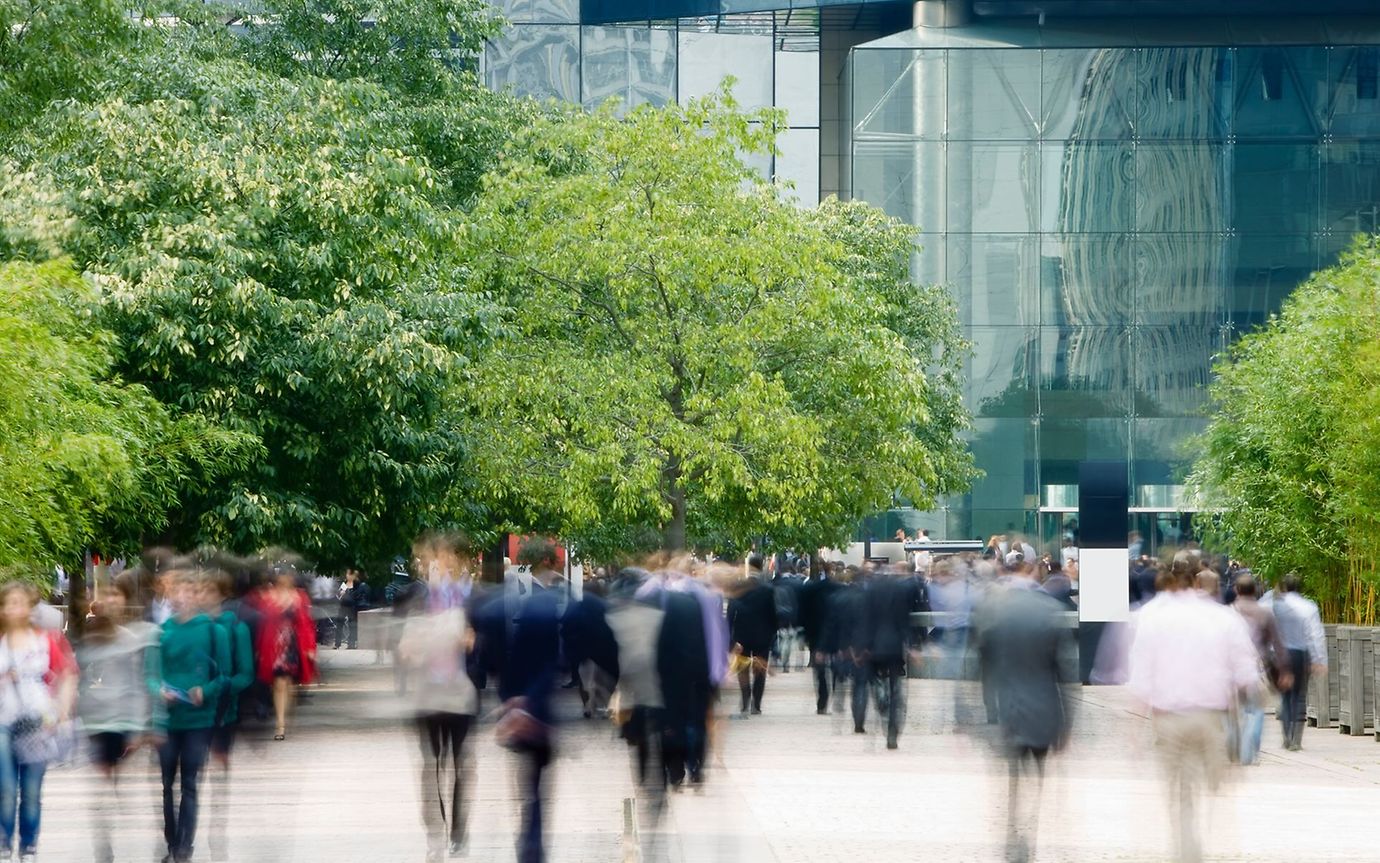
Cities around the world keep growing, and they are finding themselves increasingly in trouble due to the ravages of climate change. According to the UN, the share of the global population living in urban areas will reach 68 % by 2050, up from just 30 % in 1950. Urban residents in rich and poor countries alike face a growing tsunami of threats that will only intensify, from extended periods of extreme heat, to flooding as rivers burst their banks and rising sea levels inundate low-lying neighbourhoods.
When the World Resources Institute (WRI) recently modelled urban life scenarios with unchecked climate change, they arrived at an alarming outlook for close to 1000 of the world’s largest cities. Warming of 3 °C could result, on average, in 6.4 annual heat waves around the globe that could last in excess of three weeks. One in six big cities could experience heat waves lasting a month or longer. And there would be huge ecological impacts on plants and animals too.
It is against this sombre backdrop that cities around the world have kicked off projects large and small to build climate resilience into the urban fabric. They are bringing in actors at national, state, municipal, and local levels to plant hundreds of thousands of trees, create systems for flood mitigation, implement water-sensitive design in parks, and even unseal asphalt-covered spaces. Climate-resilient urbanism is all about taking bold, top-level ideas and implementing them from the bottom up, as the following four examples from Europe and Asia demonstrate.
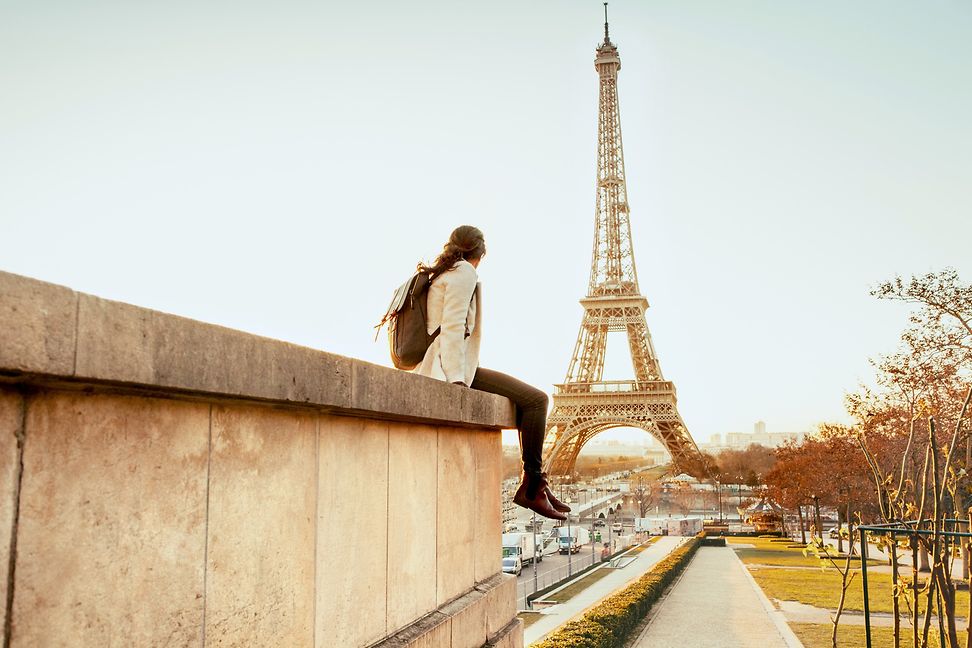
Patrick Bernard became a "friend of the neighbourhood", as he calls himself, on a whim in 2017. The Paris-based former journalist and newspaper executive who lives in the 14th Arrondissement met up with a handful of friends to establish a micro network to improve urban life. The spontaneous gathering has evolved into La République des Hyper Voisins (the Republic of Good Neighbours), a local initiative targeting around 50 streets and 15,000 of the neighbourhood’s residents. It has attracted attention around the world.

Bernard describes his idea as creating a "three-minute village" inside a metropolis that gives people easy access to essential amenities and services without having to resort to a car. Above all, it encourages them to make connections with their fellow citizens. Holding court in a local brasserie every day, he has used his personal savings and city grants to launch several projects for a more sustainable urban lifestyle. These range from greening the streets and a composting project to divert waste, to setting up a cargo-bike programme and communal charging stations, to initiatives to ban car-dependent delivery hubs. The most important event of the year is an open-air feast called Table d’Aude that takes up an entire city block and draws around 1500 visitors every September.
The city of Paris, which published a climate action plan in 2018, has taken notice. Bernard says he’s in discussions with mayor Anne Hidalgo on how to scale up the Hyper Voisins model to create 150 such three-minute villages all over Paris by 2040. "Strengthening links between people living in the same area on a daily basis naturally increases their ability to react collectively in the face of difficulties, climate-related or otherwise," he explains, putting a firm focus on creating trust through proximity.
Where others might see a prime parking spot, Bettina Walch and Isabella Sedivy spy an opportunity to add a touch more green to the city of Zurich. The journalist and the biologist have launched a grassroots campaign to reverse soil sealing in urban areas five square metres at a time. Their project with the cheeky name "Asphalt Busters" (Asphaltknackerinnen) has so far cracked open more than 1000 square metres of sealed surfaces in Zurich, and is now gearing up to expand to other cities.

Walch and Sedivy are the co-founders of Plan Biodivers, a boutique communications agency that helps public and private entities with their efforts to increase climate resilience and biodiversity. While organising workshops and performing assessments for their clients, the duo had an idea: what if city dwellers could have a say and even participate in creating more climate-conscious streetscapes?
"Surface sealing is done for good reasons, but it's completely overdone," explains Walch. "We launched Asphalt Busters in October 2022 primarily to sensitise the public." After an initial post reached more than two million people in a country of around 9 million people, the two founders started with a local trial in Zurich. Citizens who applied online were connected with a professional contractor who would demolish a parking spot and remove the debris for free. The city agreed to pay one-third (and later half) of the planning and landscaping costs of turning the black rectangle into a little oasis of green that can absorb rainwater. This is helping to transform Zurich into what urban planners call a "sponge city".
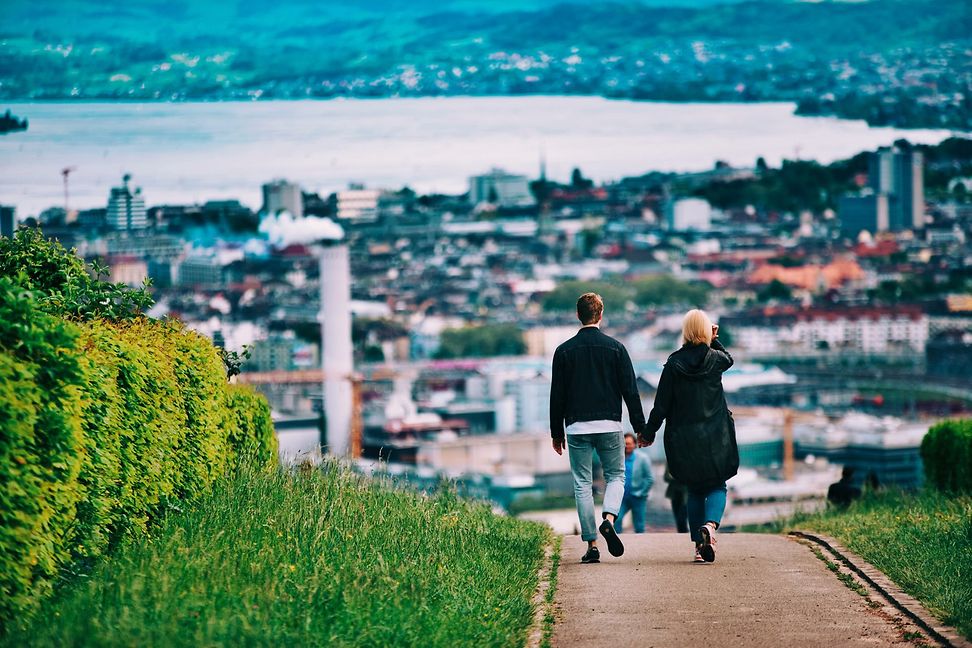
After the initial pilot in Zurich, which gained interest in Germany and Austria as well, Walch and Sedivy are now busy drawing up contracts with other cities like Winterthur, as well as with the canton of Lucerne, and with private companies, including a Swiss insurer. "Asphalt Busters started out as a little passion project, but for 2024 and 2025 we want to widen our reach with official contracts and go beyond Switzerland, for instance to Liechtenstein," says Walch, who is quite happy to try her hand at a pneumatic drill if it helps to get the message out.
The Ferghana Valley in Central Asia is a vast basin measuring 22,000 square kilometres, ringed by steep mountain ranges. Divided between the republics of Kyrgyzstan, Tajikistan, and Uzbekistan, it is home to one-third of the three states. Getting a better handle on the valley’s often volatile water situation is one of the goals of an ambitious portfolio of projects launched by the UN Development Programme (UNDP) in 2020. An EU-funded scheme "Climate Change and Resilience in Central Asia", which will run until the end of 2025, aims to improve conditions for urban centres and agricultural communities.
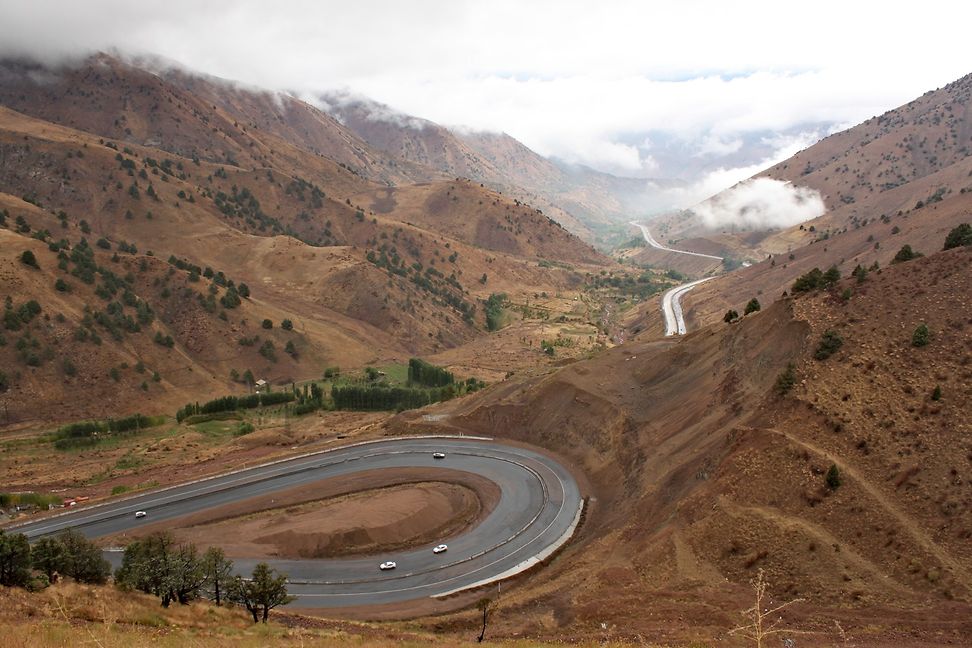
"The valley is what we call a climate hotspot, with flooding, flash floods, and other severe weather impacts, including glaciers melting faster than in some other regions of the world. We are working with all stakeholders to help build climate and disaster resilience in all three countries," explains Khusrav Shafirov, UNDP’s regional programme specialist for climate and disaster resilience. Complicating matters, the three former Soviet republics that share the valley are in a stalemate over disputed territorial borders and water rights, with occasional flare-ups into military confrontation.
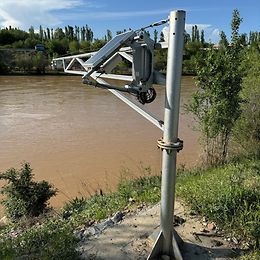
Against this delicate political backdrop, the scheme has managed to install 11 hydro-meteorological stations to replace antiquated equipment from Soviet times. The fully automated stations now send real-time data every 15 minutes to the Uzbek national utility Uzhydromet, which is posted on a publicly accessible website. The readings are intended to serve as an early warning system for the valley’s large cities like Namangan, home to over a million people, as well as for rural communities.
Who gets access to this important data, though, is still a bone of contention. As rivers meander across borders, water levels become a sensitive issue, says Shafirov. So UNDP has hosted annual meetings between the three republics, and is working on establishing data-sharing and interpretation practices. The goal is to provide provincial and municipal leaders, as well as individual citizens, with timely and useful information about rising water levels. "It doesn’t mean much to somebody to read that there will be precipitation of 50 or 100 millimetres," says Isomiddin Akramov, a regional project manager based in Tashkent. "People want to know how it might affect their lives and livelihoods."
A lethal heat wave in 2010 that claimed more than 1300 lives prompted the Mahila Housing Trust (MHT) to spring into action in this Indian city of close to nine million souls. The grassroots development organisation founded in 1994 empowers women to drive progress towards more sustainable and gender-inclusive cities. It set out to tackle the effects of climate change, mostly extreme heat, in the city’s slums by training local women to go door to door to conduct climate vulnerability assessments and offer advice in the poorest neighbourhoods.

The local ambassadors or "vikasinis" use games, videos, posters, and simply taking measurements in households to convince women to retrofit their cramped homes. "As of today, almost 15,000 women are involved in the outreach," says MHT director Bijal Brahmbhatt.
The programme has produced several tangible improvements, for example, by providing thousands of families with white paint to reflect sunlight off their rooftops and catchment systems to collect water during heavy rains. Starting in 2015, MHT also worked with a local technologist to design, test, and roll out new roofing materials using bamboo, and modular roofs that can lower room temperatures by five to six degrees. "The kit is evolving and increasing in options, based on the feedback of the women," Brahmbhatt reports, admitting to some hesitation among the target audience.
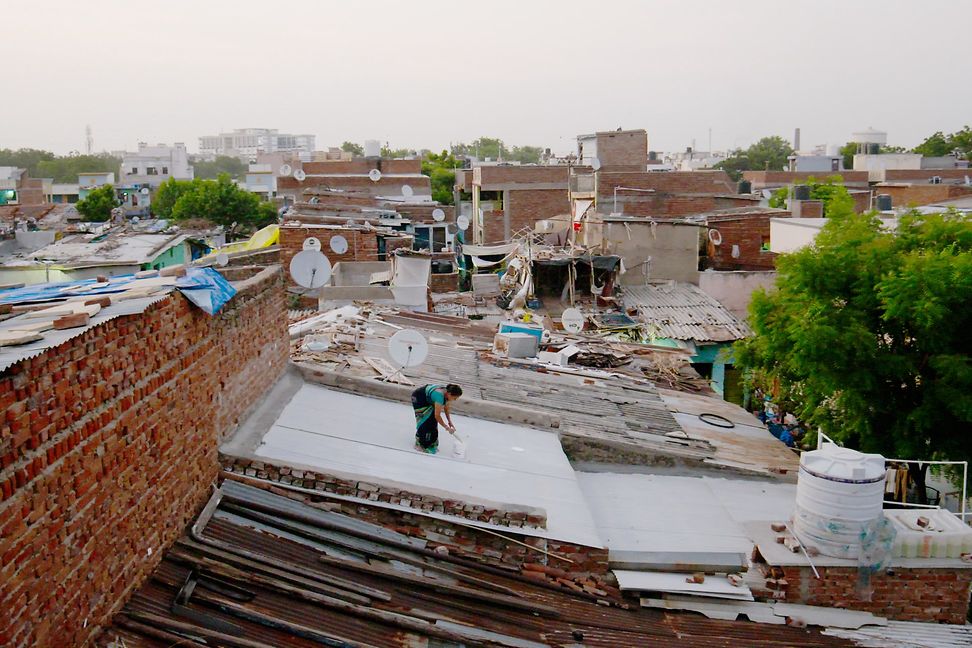
To date, MHT has expanded the scheme to over a hundred slums in ten cities in India, Nepal, and Bangladesh. Along the way it has helped make life more bearable for over 125,000 people - at a cost of just over five dollars per square metre of retrofitted roof.
Thinking about the future is part of our corporate culture.
Thinking, managing, and investing sustainably are integral parts of our DNA. Our owner, the Princely Family of Liechtenstein, recognized early on how important sustainability is for our environment, society, and future. As a family-run private bank, we are committed to the Paris Climate Agreement, the United Nations Sustainable Development Goals, and a sustainable financial sector.
Steffan Heuer has covered the intersection of business, technology, and society for international publications for more than three decades. He divides his time between the West Coast of the US and Berlin.